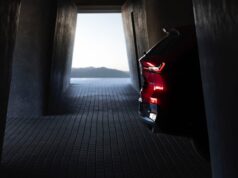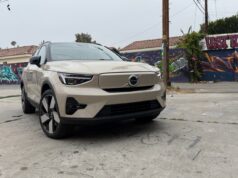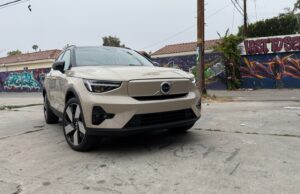Let’s start with the most important part…400. In the new Lotus Evora 400 that equates to 400hp and 395 lb-ft of torque. It’s still the same Toyota sourced supercharged 3.5L V6, but a new supercharger with new water-to-air intercooler and engine management system have brought horsepower up by 55 and torque by 100 ft-lbs.
Let’s start with the most important part…400. In the new Lotus Evora 400 that equates to 400hp and 395 lb-ft of torque. It’s still the same Toyota sourced supercharged 3.5L V6, but a new supercharger with new water-to-air intercooler and engine management system have brought horsepower up by 55 and torque by 100 ft-lbs. While the horsepower increase may not be substantial, the extra 100 lb-ft. of torque is impressive. Lotus now claims the Evora 400 is able to reach 0-60 mph in just 4.1 seconds with a top speed of 186 mph. This new found power allows Lotus Evora 400 to lap it’s home track a breathtaking 6 seconds faster than the model it replaces.

Like all Lotus cars, handling will continue to be a benchmark and the Evora 400 sets the bars as the fastest road-going Lotus ever produced. It sports more powerful, two-piece, cross-drilled ventilated brake discs to enhance braking performance while forged lightweight aluminum wheels (19″ front, 20″ rear) are shod with Michelin Pilot Super Sport tires. A new aluminum chassis incorporates a new interior and lightweight composite body panels allowing the new Evora to be almost 49 lbs lighter, which is even more impressive considering that the Evora 400 has more power.
As for the exterior, Lotus states that over two-thirds of the Lotus Evora 400 is new although it looks strikingly similar to the previous model. The 400 has a more aggressive exterior design with new front and rear ends, and door mirror designs with the length only increasing 1.4″ for a total of 173-inches. The overall effect is a car with a more aggressive stance, that appears lower, wider and more planted on the road, despite no increase in width compared with the previous Evora.
By September production is set to increase to 70 cars a week, up from 45 cars, to accommodate demand of the new model. The Evora 400 will arrive in the US this Fall, while Europe gets the new Evora a little earlier with deliveries beginning in August.
Source: Lotus










